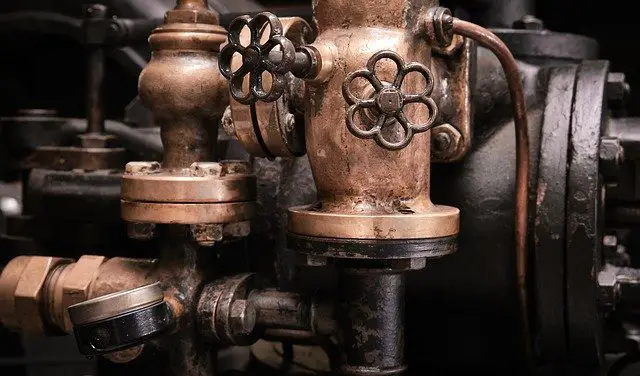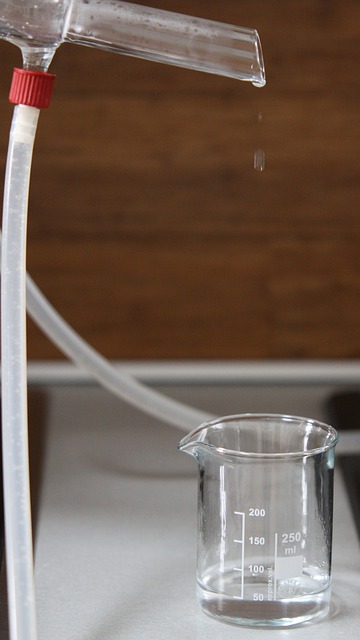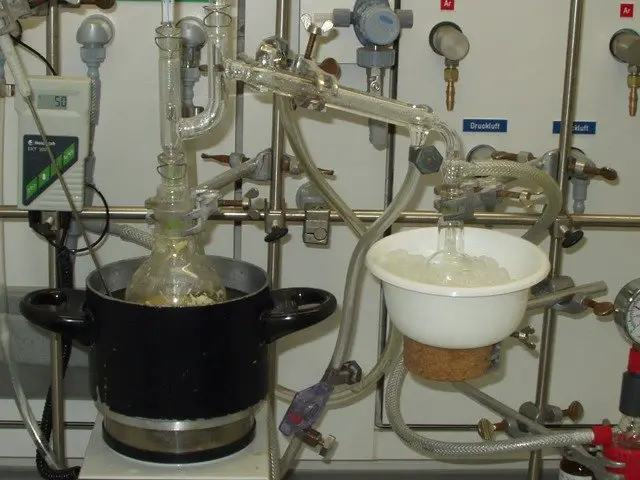What's On This Page
How does steam distillation work? In this guide, we’ll explore the process step by step, uncover its inner workings, and demonstrate practical applications. Join us as we dive into the world of steam distillation for extracting essential oils, aromatic compounds and much more. Are you ready to unlock the secrets of this ancient technique and embark on an aromatic adventure? Then let’s go!
In steam distillation, water or another liquid is heated and the steam cools and condenses into a clean liquid. The devices can be found in many places, such as homes because they can be used for cooking, cleaning and sterilizing.

In this guide, I’ll show you how to do steam distillation yourself, step by step and with two different methods: the stirring method or the continuous method.
Types of Steam Distillation
To start the distillation process, you need steam. The Steam Distillation Lab for Beginners offers a simple method using a pressure cooker. However, there are also several ways to create steam. For example, in a hot tub, you can add hot water and condense the steam into liquid form. If you have a steam sauna, hang a collection vessel from the ceiling and add your ingredients.
Now that you have steam, it’s time to choose the distillation method best suited for your needs. The stirring method and the continuous method each offers different benefits.
The Stirring Method
Gently stir the water in your still with a glass rod or similar tool until the vapour condenses into liquid form. Some people prefer to remove any undissolved particles that remain after distillation.
The Continuous Method
The continuous method requires you to stir the water evenly while boiling with a glass rod or other suitable object. The term “continuous” can be interpreted differently, as it refers to stirring at specific intervals or whenever the heat source is active.
Similar to the stirring method, the continuous method uses a small electric fan to blow air over the hot water. This facilitates the cooling and condensation of the water vapour into a liquid state.
Place your container on a hot plate with an electric heating element or use a stovetop to bring the water to a boil. Ensure the heat source is suitable for your container type and can withstand temperatures of at least 200 degrees Celsius.
Once the water is boiling, carefully place the glass container in the steam distillation apparatus, following the manufacturer’s instructions and using the appropriate amount of distilled water for your device.

Activate the heat source and set the duration required for distillation. As a rule, the boiling state must be maintained for at least four hours or until the distillation process is completed.
When distillation is complete, remove the glass container from the heat source and allow it to cool naturally until it reaches room temperature. Clean your glass apparatus thoroughly.
Examples of steam distillation
You can easily perform steam distillation using common household equipment. Let us look at a few examples:

Simple steam distillation for cooking: Place a large pot on the stove and fill it with water. Heat the water until it boils. When the water boils, steam will rise and bubble up. You can also use this method for cooking. Put your ingredients in a collection vessel and place them in the pot, allowing the steam to pass through and draw out the flavours. Ensure the water boils for at least four hours, and remove the pot as soon as the steam stops.
Steam distillation of herbs: Consider an example using herbs such as sage, rosemary, bay leaves, thyme or other aromatic plants. Take a coffee cup or a small container covered with aluminium foil. Put a mixture of the selected herbs in the container. Fill the remaining space with boiling water and set it aside. Allow the steam to act on the herbs to dissolve their aromatic components.
History of steam distillation
Steam distillation has been used since ancient times, even before the Middle Ages. In ancient civilizations, it was used to extract aromas from wine and perfume.
In the Middle Ages, steam distillation entered European households for cooking purposes. It was also used in medical and chemical processes, including alcohol production and metal purification. It was not until after 1800 that steam distillation became popular again, especially for producing distilled liquids such as water, ethanol, ether and many others.
More recently, steam distillation has been gaining popularity again, especially for household applications. As shown in the previous examples, making your own steam distillation system with readily available equipment and ingredients is straightforward.
The Steam Distillation Lab for Beginners provides instructions for building a steam vessel and other essential elements needed for steam distillation using a pressure cooker.
Cooking with Distilled Water
In cooking, the use of distilled water offers several advantages. Distilled water has a higher boiling point than ordinary tap water, so it never rises above 100 degrees Celsius. This precise temperature control can be an advantage in various cooking techniques.
In addition, distilled water evaporates more quickly than tap water. This characteristic allows for more frequent use in cooking and, when combined with ice cubes, provides effective cooling.
Incorporating distilled water into your culinary efforts can improve precision and provide unique benefits for various dishes.
Advantages and Disadvantages of Steam Distillation
Steam distillation offers several advantages and considerations to keep in mind. Let’s explore them:
Advantages
- Refreshing Water: Distilled water can be produced at room temperature, providing a refreshing alternative to cold tap water.
- Odorless and Tasteless: Distilled water is free from odour and taste, eliminating the need for additional flavourings.
- Cleaning Purposes: Distilled water is commonly used for cleaning due to its purity.
Considerations
- Plastic Leaching: There have been concerns about the potential leaching of chemicals from plastic containers into distilled water. While these chemicals are not absorbed into the distillation apparatus, it’s advisable to use plastic containers free from harmful substances and rinse them thoroughly with water before use.
With an understanding of the advantages and considerations, you can select a suitable method and explore the process of distilling water for various purposes.
How to Use Steam Distillation
If you intend to employ steam distillation for cleaning purposes, follow these steps:
- Allow the water to sit in the container overnight.
- Once the waiting period is over, filter the water and fill your containers with sterilized water.
For creating herbal tinctures using steam distillation, follow these instructions:
- Begin by boiling fresh flowers or other parts of herbs you have available. Avoid using dried herbs, which can produce a yeasty smell and liquid during steaming.
- After boiling the herbs, combine them in a metal container with your distilled water.
- Utilize your steam distillation apparatus as usual, allowing the water to evaporate and extract the herb into a liquid form.
- Finally, strain the liquid from the distillation vessel to separate the herb.
To extract essential oils from plants using steam distillation, adhere to these steps:
- Boil your selected plants and transfer them to a glass distillation vessel.
- Employ your steam distillation apparatus as per standard procedure to complete the process.
- Now, relish the benefits of essential oils in your home!
Following these instructions, you can effectively utilize steam distillation for various applications.
Instructions for Making a Medicine Using Steam Distillation
If you wish to go beyond making herbal tinctures and essential oils and create a medicine that can be consumed at home, follow these steps:
- Obtain or prepare the desired plant for your medicine, ensuring you have the necessary components. Thoroughly mix the herbs to ensure they are well combined before proceeding with steam distillation. It’s important to submerge all the herbs in distilled water to enhance extraction.
- Steam distillation generates highly effective water for cleaning purposes, as it eliminates microorganisms upon contact. Prepare a mixture of desired herbs and submerge them in a glass container using distilled water. Allow the mixture to work for at least 10 minutes, allowing the herbs to absorb the steam from the water.
- After the designated period, strain the water and any remaining herb particles from the mixture. Transfer the resulting liquid to a medicine bottle for storage and use.
Where to Use Steam Distillation
Steam distillation offers a wide range of applications. The following examples, while not exhaustive, give an idea of the versatility of this technique. Discover more uses for steam distilled water in your household!
Steam distillation should be handled with care to avoid potential health risks. The steam produced during the process should not be inhaled, as it can be dangerous. We strongly advise against it.
Despite the necessary precautions, steam distillation can greatly improve your home’s well-being. If you have not tried this method yet, we encourage you to try it and experience the numerous benefits firsthand. You will soon understand why steam distillation is preferred by people all over the world.
Common Problems that May Occur in a Steam Distillation Process
With steam distillation, it is important to be aware of the potential problems that can occur. You can avoid these common problems in your home distillation if you know them. Below we have listed some of these problems and tips for avoiding them.
A common problem with steam distillation is the residue buildup on the glassware. These residues contain compounds that are not beneficial to the body and can be visually unsightly. To avoid residue formation, ensure no water droplets are in the steam and use distilled water for steam generation.
Another common problem is the risk of overheating the steam. Prolonged heating can cause the steam to turn brown and burn the distilled plant material.
Knowing these problems and taking preventive measures can improve your steam distillation and achieve optimal results.
Things You Must Be Aware of When Operating a Steam Distillation
In steam distillation, there are certain factors that you should consider to achieve a successful result. By considering these considerations, you can avoid potential pitfalls and achieve the desired results. Below are two important aspects to consider when using steam distillation.
First, it is important to know the specific gravity of the water. This knowledge will allow you to obtain the right concentration of distilled alcohol. If you do not know this, the alcohol may be too weak or too strong, similar to using an inappropriate tea bag for a teapot.
One of the notable advantages of steam distillation is its versatility in areas with limited or unreliable access to direct electricity. This makes it particularly valuable in regions such as remote villages in developing countries or emergencies. Steam distillers can obtain clean drinking water from seawater or any other impure water source using solar distillers.
By considering these factors, you can effectively control the steam distillation process and reap its benefits in various situations.
The process of steam distillation was refined by the
The steam distillation process was refined in the Ottoman Empire in the late 14th and early 15th centuries. Avicenna described the distillation process in his treatise “On the Canon of Medicine.” He suggested using stills made of glass or earthenware, as it was believed that they would produce a higher quality of distilled water and a higher overall output than stills made of clay.
In 1441, Aeneas Silvius Piccolomini, later Pope Pius II, published his book on medicine entitled “De re medica” This book was a compilation of medieval medical techniques that included information on steam distillation.
References, Other Sources, and Extra Information
http://www.fda.gov/MedicalDevices/Safety/RecallGuidanceRegulation/ucm160157.
http://www.naturallybetter.com/water_distillation.html
http://www.pbs.org/newshour/updates/science/jan-june04/water_04-25.html
Leave a Reply